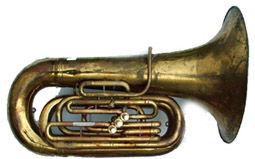Article by Idit fisterman/shazar
The story of Israeli traditional folksongs is one of transformation from humble community singing to polished concert performance. What began as the shared voice of workers, farmers, and dreamers became a source of artistic inspiration for generations of composers. These melodies, once passed from one singer to another in open fields and crowded gatherings, have gradually found their way into concert halls, where their simplicity and sincerity continue to resonate through refined interpretation.
The roots of Israeli folksong stretch back to the early decades of the twentieth century, when Jewish settlers in Palestine sought to express a renewed sense of identity through song. The music they created drew upon many sources: Eastern European folk tunes, biblical motifs, Yemenite and Middle Eastern scales, and the rhythms of Mediterranean life. In this melting pot of influences, songs such as Hine Ma Tov, Erev Shel Shoshanim, and Shir Ha’Emek emerged as collective hymns to labor, landscape, and hope. Their melodies were direct and memorable, often accompanied only by guitar or simple percussion.
As Israel’s cultural life matured, musicians began to reimagine these songs within the language of concert music. The movement from oral tradition to written score marked a turning point. Composers and arrangers recognized that the folk repertoire could serve as the foundation for a new national art music. By introducing harmony, counterpoint, and orchestration, they gave these familiar melodies new depth and expressive power.
Among those who contributed to this evolution were composers such as Paul Ben-Haim, Marc Lavry, Yehezkel Braun, and later Noam Sheriff and Tzvi Avni. Each approached folk material differently. Ben-Haim’s arrangements often blended Eastern and Western sonorities, evoking both nostalgia and sophistication. Lavry, known for his rhythmic energy, transformed simple tunes into vivid orchestral tableaux. Braun preferred clarity and balance, creating transparent textures that preserved the folk essence.
Over time, these adaptations reached a variety of formats choral works, orchestral suites, and chamber settings, including arrangements for piano trio that allowed the music to thrive in more intimate concert settings. In such arrangements, the violin often carries the vocal line, the cello provides a warm harmonic foundation, and the piano recreates the rhythmic pulse of the original folk dance or song. These versions retain the spontaneity of the source material while inviting classical nuance and expressive shading.
Concert versions of Israeli folksongs have become a bridge between generations. They bring together the collective memory of the early settlers and the interpretive freedom of modern performers. Hearing a folk melody performed by a symphony orchestra or a chamber ensemble reveals its adaptability and timelessness.
In essence, this music tells two stories at once: one of a people building a homeland through shared song, and another of artists shaping that heritage into concert art. Whether sung in a field or played beneath stage lights, the spirit of these songs endures simple, heartfelt, and deeply rooted in the sound of a nation finding its voice.
The story of Israeli traditional folksongs is one of transformation from humble community singing to polished concert performance. What began as the shared voice of workers, farmers, and dreamers became a source of artistic inspiration for generations of composers. These melodies, once passed from one singer to another in open fields and crowded gatherings, have gradually found their way into concert halls, where their simplicity and sincerity continue to resonate through refined interpretation.
The roots of Israeli folksong stretch back to the early decades of the twentieth century, when Jewish settlers in Palestine sought to express a renewed sense of identity through song. The music they created drew upon many sources: Eastern European folk tunes, biblical motifs, Yemenite and Middle Eastern scales, and the rhythms of Mediterranean life. In this melting pot of influences, songs such as Hine Ma Tov, Erev Shel Shoshanim, and Shir Ha’Emek emerged as collective hymns to labor, landscape, and hope. Their melodies were direct and memorable, often accompanied only by guitar or simple percussion.
As Israel’s cultural life matured, musicians began to reimagine these songs within the language of concert music. The movement from oral tradition to written score marked a turning point. Composers and arrangers recognized that the folk repertoire could serve as the foundation for a new national art music. By introducing harmony, counterpoint, and orchestration, they gave these familiar melodies new depth and expressive power.
Among those who contributed to this evolution were composers such as Paul Ben-Haim, Marc Lavry, Yehezkel Braun, and later Noam Sheriff and Tzvi Avni. Each approached folk material differently. Ben-Haim’s arrangements often blended Eastern and Western sonorities, evoking both nostalgia and sophistication. Lavry, known for his rhythmic energy, transformed simple tunes into vivid orchestral tableaux. Braun preferred clarity and balance, creating transparent textures that preserved the folk essence.
Over time, these adaptations reached a variety of formats choral works, orchestral suites, and chamber settings, including arrangements for piano trio that allowed the music to thrive in more intimate concert settings. In such arrangements, the violin often carries the vocal line, the cello provides a warm harmonic foundation, and the piano recreates the rhythmic pulse of the original folk dance or song. These versions retain the spontaneity of the source material while inviting classical nuance and expressive shading.
Concert versions of Israeli folksongs have become a bridge between generations. They bring together the collective memory of the early settlers and the interpretive freedom of modern performers. Hearing a folk melody performed by a symphony orchestra or a chamber ensemble reveals its adaptability and timelessness.
In essence, this music tells two stories at once: one of a people building a homeland through shared song, and another of artists shaping that heritage into concert art. Whether sung in a field or played beneath stage lights, the spirit of these songs endures simple, heartfelt, and deeply rooted in the sound of a nation finding its voice.


